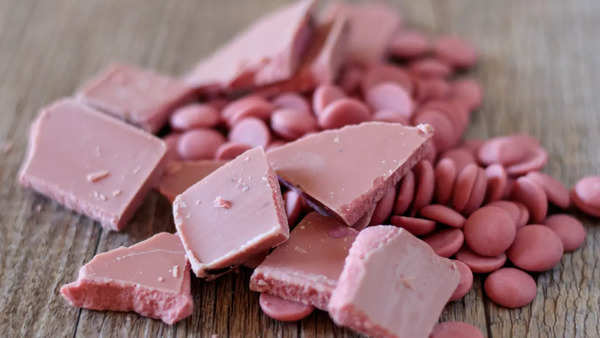History of chocolate: Chocolate traces its origins back to ancient Mesoamerican cultures such as the Olmecs, Mayans, and Aztecs, who revered cacao beans as a precious commodity and used them to create a bitter, frothy beverage consumed during religious rituals and special ceremonies. The Mayans, in particular, are credited with the cultivation and domestication of cacao trees. As per online data, it was during the 16th century that Spanish explorers like Hernán Cortés encountered chocolate during their conquests in Central America. They brought cacao beans back to Europe, where chocolate was initially consumed as a beverage among the Spanish nobility. Over time, its popularity spread across the continent, and chocolate houses began to emerge in cities like London, Paris, and Venice. In the 19th century, technological advancements revolutionized the chocolate industry. The invention of the cocoa press by Dutch chemist Coenraad Van Houten in 1828 enabled the production of cocoa powder and cocoa butter, paving the way for the creation of solid chocolate bars and confections.
In the 20th century, chocolate became more accessible to the masses as large-scale manufacturing processes and marketing campaigns made it a staple treat worldwide. Today, chocolate is enjoyed in various forms and flavors, from decadent truffles to creamy bars, and continues to hold a special place in global culinary traditions and cultural celebrations.
Also Read:Reasons why you must eat chocolates daily!

Dark Chocolate: Rich and intense, dark chocolate contains a higher percentage of cocoa solids and less sugar compared to other types of chocolate. Rich in nutrients, it is helpful in reducing free radicals, improving blood flow, lowering bad cholesterol, and increasing insulin resistance.
Milk Chocolate: Creamy and sweet, milk chocolate contains milk powder or condensed milk, giving it a smoother texture and a sweeter taste. It is rich in calcium and also contains small amounts of iron, potassium, zinc, vitamin A, and vitamin K.
White Chocolate: Made from cocoa butter, sugar, and milk solids, white chocolate lacks cocoa solids but offers a rich, buttery flavor. It is rich in magnesium, calcium, and potassium, which help regulate blood pressure, blood vessels, bone health, and even the digestive system.
Semisweet Chocolate: Often used in baking, semisweet chocolate contains a moderate amount of sugar and cocoa solids, striking a balance between sweetness and chocolate flavor. As per experts, the cocoa content in semi-sweet chocolate is usually between 60% cacao and 50% sugar.
Unsweetened Chocolate: This type of chocolate does not contain any added sugar, making it a much healthier and more natural option for those looking for a no-sugar treat. It is made from cocoa beans that have been dried, fermented, and roasted. It also uses cocoa butter and has a bitter taste with hints of nuttiness.
Bittersweet Chocolate: With a higher cocoa content and less sugar than semi sweet chocolate, bittersweet chocolate provides a more intense chocolate flavor with a hint of bitterness. It is rich in antioxidants, minerals, and vitamins. It has a rich chocolate flavor with a hint of bitterness.
Ruby Chocolate: A unique variety, ruby chocolate is made from ruby cocoa beans and has a distinct pink hue. It offers a slightly fruity flavor with a creamy texture. For instance, the pink hue is natural, and it doesn’t contain any added colors. Its distinctive ruby color comes from the ruby cocoa bean, which is found in Brazil, Ecuador, and the Ivory Coast. It is best suited for baking.

Couverture Chocolate: It is a high-quality, high-cocoa butter content chocolate typically used by professionals in baking and confectionery. It is made with pure cocoa butter and has a smooth texture and rich flavor, making it perfect for precise desserts such as chocolates and mousses.
Organic Chocolate: Produced using organic cocoa beans and ingredients, organic chocolate offers a natural and sustainable option for chocolate lovers.
Single-Origin Chocolate: Made from cocoa beans sourced from a specific region or plantation, single-origin chocolate showcases the unique flavor profile of that particular area’s beans.
Vegan Chocolate: Free from dairy and animal products, vegan chocolate uses plant-based ingredients like coconut milk or almond milk to achieve a creamy texture and rich flavor.
Flavored Chocolate: Chocolate infused with various flavors, such as mint, orange, caramel, sea salt, or chili, offers a delightful twist on traditional chocolate, adding layers of complexity to its taste profile.

Note: Additionally, chocolate contains compounds like theobromine and phenylethylamine, which may contribute to feelings of happiness and well-being by promoting the release of endorphins and serotonin in the brain. However, it’s important to note that while dark chocolate can offer health benefits, it should be consumed in moderation as part of a balanced diet, as excessive consumption can lead to weight gain and other health issues due to its high calorie and sugar content.
How to use chocolate in cooking: As per experts, from desserts to drinks, you can use chocolate in making a wide range of delicacies. From Chocolate Mousse, Chocolate Cake, Chocolate Cookies, Chocolate Pastry, to Chocolate Shake, Chocolate Smoothie, one can try a wide range of dishes. If you are someone who loves to experiment, then you can also try Chocolate Sandwich, Chocolate Crepe, and more. Try the dishes as per your taste and for recipes, you can visit our recipes website, Times Food.
Thumb and Embed Images Courtesy: istock

